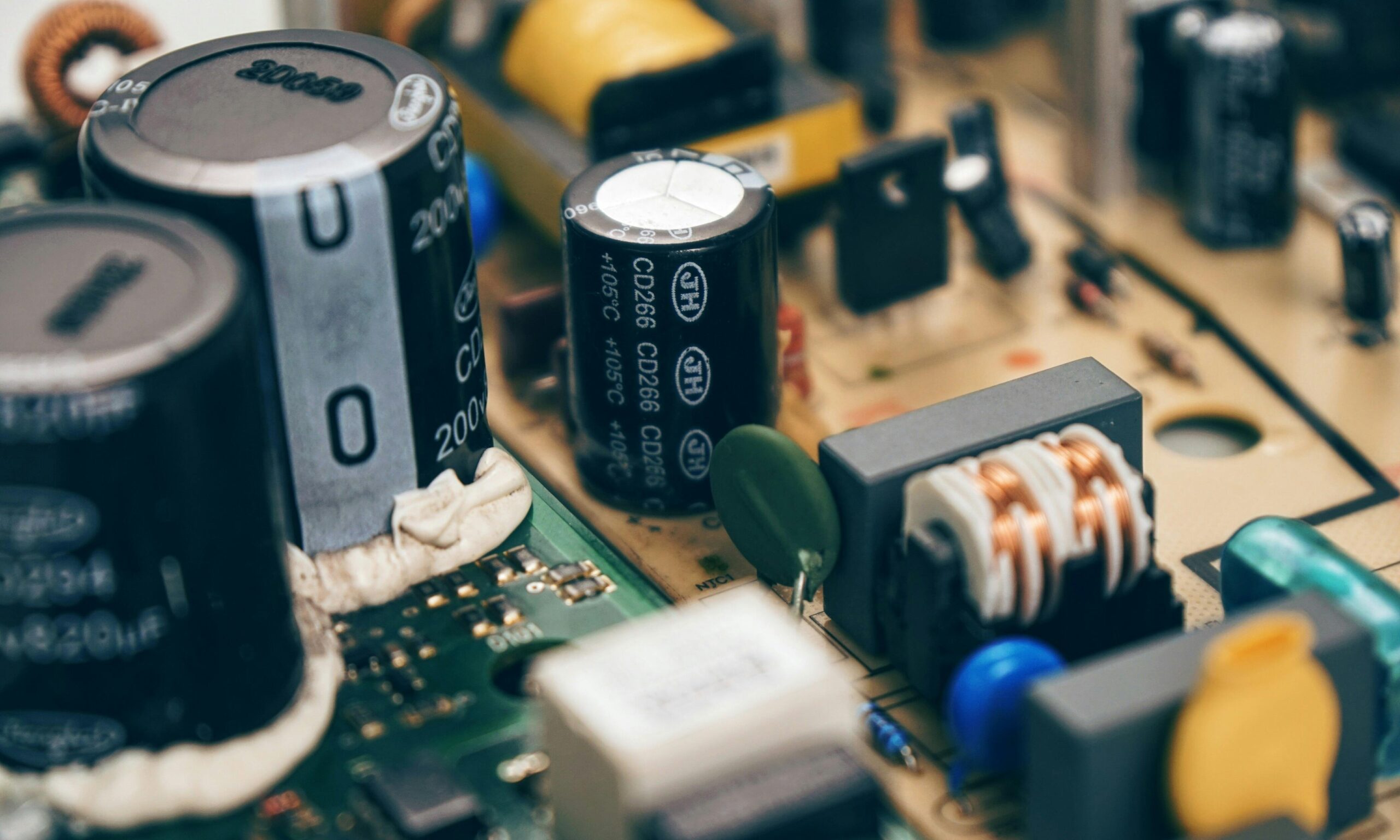Capacitors are basic constituents of electronics, integral parts in many electronic gadgets-from industrial machinery down to cellular phones. A better understanding of capacitors and their various uses could give an individual an edge in the design and maintenance or repair of the device. Types of capacitor, power, and significant applications will be discussed in this tutorial that may help you realize further the power of their use.
What is a Capacitor?
A capacitor is a passive electronic component used to store electrical energy, which is afterwards released. Two conducting plates, separated by an insulating dielectric-a non-conductive material-constitute this component. When a voltage is applied across the component, an electric field across the dielectric is formed; energy is stored within a capacitor as an electric charge.
Since capacitors store and transmit energy through circuits, filter out noise, and control voltage, they find extensive uses both in DC and AC systems.
How Capacitors Work
If a power source is then attached to a capacitor, the capacitor becomes charged with electrical energy. In its fully charged state the capacitor acts like an energy reservoir, supplying the stored energy to the circuit whenever demanded. The ability of a capacitor to store energy-the so-called capacitance-is measured in units called farads (F) and depends on the dielectric material used, the plate spacing, and the plate area.
The fundamental formula relating voltage and charge for a capacitor is:
Q = CV
Where:
Q is the charge in coulombs,
C is the capacitance in farads, and
V is the voltage across the plates.
Types of Capacitors
Capacitors come in many shapes and forms, and each type is more suited to a specific application. You will want to become familiar with the differences so that you can select the most appropriate one for the application at hand.
Ceramic Capacitors: Ceramic capacitors serve in applications involving very high frequencies, such as within filters and oscillators. They are much smaller in size and generally inexpensive. Although their capacitance is relatively low, they are quite reliable and stable.
Electrolytic capacitors: The reason why electrolytic capacitors are so common in power supplies is that they possess great capacitance and can store a large amount of charge. They are polarized, and their correct connections should be ensured in order to avoid damage.
Tantalum Capacitors: Smaller compared to electrolytic capacitors, tantalum capacitors enjoy great repute for reliability in low-voltage applications such as computers and mobile phones.
Film Capacitors: Excellent stability and very low loss make film capacitors an ideal choice for high voltage applications. Common applications include audio circuits, power conditioning, and motor run.
Supercapacitors: Supercapacitors are designed for target applications that need high storage capacity of energy and high cycling counts of charge/discharge. Applications include: backup power systems, energy storage systems, and electric vehicle regenerative braking.
Key Applications of Capacitors
Capacitors are integral to many electronic systems and have a wide range of applications:
Energy Storage: Capacitors store energy for later use in applications such as camera flashes, emergency lighting, and uninterruptible power supplies.
Power Conditioning: Capacitors have found major applications in power supplies for filtering to remove unwanted AC components, thus providing a pure DC voltage output essential for satisfactory operation of sensitive electronics.
Signal Processing: Capacitors allow the filtering and tuning of signals in audio and radio frequency circuits by allowing certain frequencies to pass while blocking others, hence allowing finer control of the signal.
Motor Starters: The starting of electric motors requires a phase shift provided by capacitors. This becomes necessary for motors operating on single-phase supplies, as in household appliances.
Energy Efficiency: Through a minimalist perspective, capacitors achieve energy efficiency by reducing energy loss from systems. For example, in power factor correction, capacitors act against lags that characterize voltage-current relationships to ensure optimum use of power in industries and commercial centers.
Factors to Consider When Choosing a Capacitor
Selecting the right capacitor for your application involves considering several factors:
Capacitance: It defines the amount of charge that a capacitor will store. Low-capacitance capacitors are good for signal processing, while high-capacitance ones work just fine for power supply filtering.
Voltage Rating: The capacitor must be rated to handle voltage in a circuit. If the voltage is higher than the rated voltage, the capacitor and probably the circuit can be damaged.
Temperature Stability: A good thermal stability capacitor is selected because they may be exposed to temperature fluctuations and therefore could not reliably operate.
Size and Form Factor: For an application, the size could also be a factor in choosing the right capacitor. When space is compact, as with handheld or portable devices, miniature forms of capacitors serve the purpose well, such as the tantalum or ceramic types. Applications requiring higher power need bigger sizes of capacitors, including electrolytic or film varieties.
ESR (Equivalent Series Resistance): ESR simply means equivalent series resistance, which shows that the high-frequency applications should use low-ESR capacitors because they will dissipate less energy and, consequently, very low heat.
Conclusion: Harnessing the Power of Capacitors
Among all the versatile components, capacitors are an integral part of modern electronics. They are used in energy storage, signal processing, and power conditioning in various devices and systems, all serving to make those systems better in performance and efficiency. You will be able to develop better designs aimed at enhancing system performance with capacitors by understanding how they work and selecting the most appropriate type for your application.
An understanding of how capacitors work is critical for anyone who is an engineer, technician, or even a do-it-yourself enthusiast working with today’s complicated electronics.
Read more about Transforming the Future of Inductor Design
